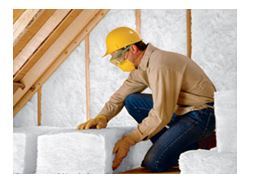Any time you see icicles dangling from gutters, it is a sign of a potentially costly problem in a home. If you live in an area that experiences significant snowfall and consistently cold temperatures, your home is a candidate for forming ice dams.
What exactly is an ice dam and why is it a problem?
As snow melts on the roof, that meltwater drips downward toward the edge and the gutter. However, if it’s cold enough, it re-freezes at the colder roof edge, which means the water does not drain. This frozen water forms a “dam” which prevents drainage and can cause water to leech back into your home, either into the ceiling/attic or down into the walls below.
Water leaking into the home can be a costly problem. The Insurance Information Institute (IIS) estimates that the average homeowner claim for water damage and freezing is just over $3,000. Worse still, this seems to be a growing problem. IIS also reports that claims resulting from water damage and freezing have increased significantly in recent years, from 14.6% of all claims in 2005 to 23.7% in 2009. That’s a 62% increase over 5 years.
Why would I get ice dams?
If your attic is not conditioned, the temperature of the whole roof should be largely consistent all over and you wouldn’t have snow melting in one area and then re-freezing in another. However, if heat is finding its way from your conditioned living area into the attic you can get warm areas and cold areas, which may cause ice dams. Remember, both heat flow and warm air travel from areas of higher temperature to areas of lower temperature. Proper air sealing and ceiling/attic insulation can prevent warmth from escaping and causing ice dam issues.
Prevention vs. Remediation
Spending the time and money to prevent ice dams is much easier—and more economical—than trying fix them once they form. Calling a roofing crew to remove ice and snow is costly and more expensive than having an insulation professional seal and insulate for you. Plus, you run the risk of roof damage during the removal process and ice removal won’t stop ice dams from forming again. Insulation and air sealing are a much more reliable and permanent ice dam solutions.
My house gets ice dams. What should I do?
If you believe your home is a candidate for ice dams or you’ve had them before, you need to air seal and insulate before winter sets in. You can do the job yourself or hire an insulation professional to ensure it is done right. Either way, pay special attention to ensuring the roof insulation is installed properly where the roof meets the wall. Ice dam solutions for a given home may not be limited to air sealing and insulation, but it is a necessary component.
See More
–+
Sometimes space is limited as the roof slopes and meets the wall, so people fail to install the proper amount of insulation in these areas. However, it is exactly this area where the damming occurs, so it is especially important to make sure you have both sealed and insulated it fully.
